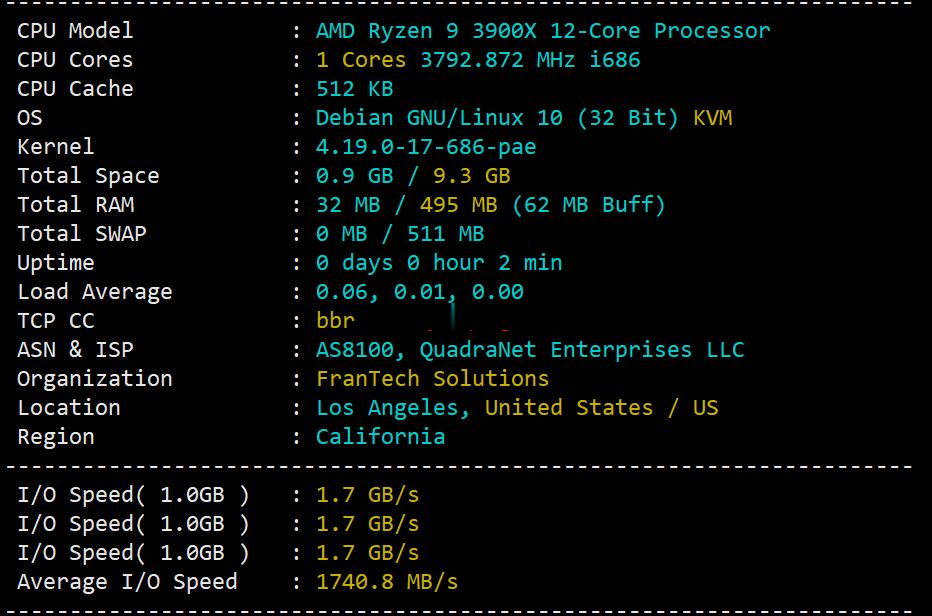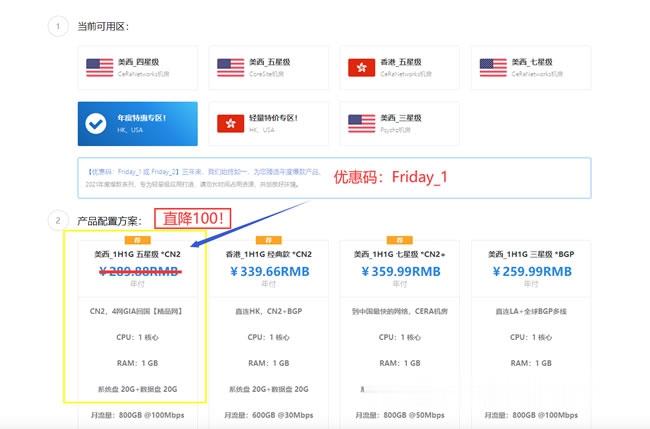encesmetinfo
metinfo 时间:2021-04-12 阅读:()
ORIGINALPAPERIntegratingriskpreferencesinforestharvestschedulingKyleEyvindson1&AnnikaKangas2Received:7May2015/Accepted:13August2015/Publishedonline:11September2015#INRAandSpringer-VerlagFrance2015Abstract&KeymessageThroughastochasticprogrammingframe-work,riskpreferencescanbeincludedinforestplanning.
Thevalueofutilizingstochasticprogrammingisalwayspositive;however,thevaluedependsontheinformationqualityandriskpreferencesofthedecisionmaker.
&ContextHarvestschedulingrequiresdecisionsbetakenbasedonimperfectinformationandassumptionsregardingthefuturestateoftheforestandmarkets.
&AimsTheaimofthisstudyistoincorporateelementsofriskmanagementintoforestmanagement,sothatthedecisionmakercanunderstandtherisksassociatedwithutilizingtheimperfectdata.
&MethodsIncorporationofuncertaintyisdonethroughsto-chasticprogramming.
Thisallowsforthedecisionmaker'sattitudetowardsrisktobeincorporatedintothedevelopmentofasolution.
Bymeansofasimpleeven-flowproblemfor-mulation,amethodofusingstochasticprogrammingtoincor-porateexplicittrade-offbetweenobjectivefunctionvalueandriskofnotmeetingtheconstraintshasbeendeveloped.
&ResultsThedifferentmodelshighlighttheimportanceofincludinguncertaintyinmanagementofforestresources.
Ingeneral,asthedecisionmakerbecomesmoreriskaverse,theincorporationofuncertaintyintothemodelbecomesmoreimportant.
&ConclusionsTheuseofstochasticprogrammingallowsforadditionalinformationtobeincludedintheformulation,andthisallowsforthedecisionmakertoaccountfordownsiderisk.
KeywordsStochasticprogramming.
Multiplecriteriadecision-making.
Risk.
ValueofInformation.
Even-flowforestry1IntroductionDevelopingharvestschedulingplans(ormoregenerallyforestmanagementplans)requirestheuseofimperfectinformationaboutthestateoftheforestanditsfuturedevelopment,thepreferencesofforestowner,andthemarket.
Informationaboutthedistributionoferrorsformostforestvaluescanbestatisti-callyestimated(GregoireandValentine2008).
Uncertaintyabouttimberpricedevelopmentorclimatechangedevelop-mentcannotbestatisticallyestimatedbutcouldrelyonexpertopinionstoevaluatetheuncertainties(e.
g.
,LeskinenandKangas2001).
However,thisinformationabouttheerrorisrarelyusedwhendevelopingamanagementplan(Diaz-BalteiroandRomero2008).
Typically,theplanningstartswiththeassumptionthatboththeinventorydataandforecastingtoolsusedaccuratelydescribeboththecurrentandfuturestateoftheforest.
Plansarethencreatedwhichperformoptimally,subjecttostrictconstraints,fortheveryspecificcasewherethecurrentandfuturestateoftheforestmatchestheestima-tion/prediction.
BychoosingtoignoretheestimatesoferrorinHandlingEditor:BarryAlanGardinerContributionoftheco-authorsEyvindson:writingpaper,dataanalysis,andmethoddevelopment.
Kangas:editingpaper,methoddevelopment,andsupervision.
*KyleEyvindsonkyle.
eyvindson@helsinki.
fiAnnikaKangasAnnika.
kangas@luke.
fi1DepartmentofForestSciences,UniversityofHelsinki,P.
O.
Box27,FI-00014Helsinki,Finland2EconomicsandSociety,NaturalResourcesInstituteFinland(Luke),P.
O.
Box68,FI-80101Joensuu,FinlandAnnalsofForestScience(2016)73:321–330DOI10.
1007/s13595-015-0517-2theinformation,theplannerremovestheabilitytoactivelymanagetherisksofmeetingeitherthestrictconstraintsortheoptimizationoftheobjectivefunction.
InthepioneeringbookbyKnight(1921),adifferentiationbetweenriskanduncertaintyhasbeenmadewhereriskhasaknownprobability,anduncertaintyhasanunknownprobabil-ity.
Formanysituations,thisdefinitedistinctionisobscured,forinstancewhilewedonotknowtheexactprobabilityofapieceofinformation,wehavereasonableestimatesoftheprobabilities.
Sowhilewemaybeoperatingunderacaseofuncertainty,byusingreasonableestimatesoftheprobabilities,wecananalyzethesituationbyusingmethodswhichoperateunderrisk.
Managementofrisksfallsintothreedifferentcat-egoriesinforests:resources(relatingtotheproductionanddevelopment),markets(priceuncertainty,bothcostsandrev-enues),andpreferences(decisionmakersandpolicymakers).
Thefocusofthispaperwillbeontheresourceriskofimper-fectinventorymeasurements;however,thetheoreticalframe-workcouldintegratetheriskfrombothmarketandpreferen-tialsources.
Whiletherehasbeensubstantialresearchconductedintoanalyzingtheerrorsofforestinventorymethods(e.
g.
,Mkinenetal.
2010),littleresearchhasbeendonetomanagetheserisksaccordingtotheriskpreferencesofthedecisionmaker(s)(DM).
Thefocusoftheliteratureregardinguncer-taintyinforestmanagementhasfocusedonensuringthattheflowconstraintsaremetunderuncertaintyaccordingtosomegivenprobability.
HofandPickens(1991)usedachance-constrainedandchance-maximizingapproachtoproduceplanswhichminimizedtheprobabilityofnotmeetingdemandforthreeharvestproducts.
PalmaandNelson(2009)usedrobustoptimizationtoprotectagainsttheuncertaintyoftheyieldanddemandoftimber,whilemaximizingnetpresentvalue.
Thesemethodsallowedrisk-averseDMstoensurewithahighlevelofprobabilitythattheconstraintsremainfeasible(BertsimasandSim2004).
However,thisfeasibilitymaybeoveremphasizedinmanyofthecases(seee.
g.
,Mulveyetal.
1995).
Forinstance,inthetraditionaleven-flowproblem,re-quiringexactlyeven-flowisusuallynotthatimportant,andinmanycases,theflowisrequiredtostay,say,within3%ofthefirstperiodflow(e.
g.
,Duvemoetal.
2014).
Thisformulationmightmakebettersensethanexacteven-flowindeterministicproblemformulation,butintherobustprogrammingcontext,bothformulationsmaybetooexpensivefortheDMwithrespecttotheobjectivefunctionvalue.
Otherresearchers(Eid2000;Islametal.
2010)havefo-cusedonevaluatingtheimpactinventoryerrorshaveontheachievementofgoals(i.
e.
,netpresentvalue)atastand-wiselevel.
Thisapproachincorporateserrorintothedecision-makingprocess;however,thisdoesnotallowtheDMtopro-videpreferencesonhowtheriskshouldbemanaged.
Throughastochasticprogrammingformulation,Kangasetal.
(2014)haveproducedamethodwhichcanbeusedtoindicatewhereupdatingforestinventorydataisvaluable,whichcouldbemodifiedtoincorporatetheriskpreferencesofanindividualDM.
Additionally,throughtheuseofstochasticgoalprogram-ming,EyvindsonandKangas(2014)havecreatedamethodtodevelopmanagementplanswhichimplicitlyaccountsfortheriskpreferencesoftheDMthroughtheproblemformulationthroughminimizingtheriskofnotachievingthetargetsset.
Explicitaccountingofriskmeasuresinforestmanagementplanningissomethingwhichhasnotreceivedmuchattention.
PiazzaandPagnoncelli(2014)havedevelopedamodelwhichprovidesoptimalpoliciestomaximizenetpresentvaluecon-sideringpriceuncertainty.
Ifadditionalconstraintsareinclud-ed,forinstance,aneven-flowofincomethroughtheplanninghorizon,theriskofnotmeetingtheseconstraintsshouldbeaddressed.
Thenoveltyoftheapproachdescribedhereisthatriskisexplicitlyaccountedfor,andthedecisionmakercandeterminethetrade-offbetweentheobjectivefunctionvalueandensuringtheeven-flowpolicy.
Asignificantamountofliteratureonmanagingriskinaforestrysettingrelatestomanagingthecostscausedbynaturalhazards(Hanewinkeletal.
2011).
Accountingfortheimpactofnaturalhazardsisimportantandcansignificantlyinfluencehowaforestedareawillbemanaged(Savageetal.
2011).
RiskpreferencesarespecifictoanindividualorgroupanddependuponwhichaspectsofforestmanagementareimportanttotheDMandhowtheseaspectsrelatetoeachother.
Forinstance,ifaDMwishestomaximize(minimize)asingleforestvariablewheretheriskcannotbemanagedbasedonthetreatmentoptionsselected,thenunderstandingtheDM'sriskprefer-encesarenotrequired.
Iftheriskstothestandsdependonthetreatmentoptionsselected(e.
g.
,riskoffireorwind-throw),thenthemanagementfocusisatrade-offbetweenmaximizingtheobjectivefunctionandminimizingtheriskofnaturalhaz-ards.
Likewise,whentheDMhasadditionalconstraints,suchasarequirementforanevenflowofincome,themanagementfocusisatrade-offbetweentheobjectivevalueandriskofnotmeetingthoseconstraints.
Themanagementofforestresourcesisrisky,andDMsshouldhavetheopportunitytohaveanimpactonthoseaspectsofriskwhicharemanageable.
Todothis,weproposeusingstochasticprogramming(BirgeandLouveaux2011;KingandWallace2012)asamethodtoincorporatetheinherentrisksofmakingdecisionswithimperfectinformation.
TheapproachdescribedinthispaperreflectstherobustoptimizationmethoddescribedbyMulveyetal.
(1995),wheretheybalancetheobjectivevaluefunctionwiththefeasibilityoftheproblemunderasetofscenarios.
Itcanbeinterpretedasaninherentlytwo-stagestochasticprogrammingapproachwiththesecondstagedescribedwithpenalties(BirgeandLouveaux2011).
Asthemitigationofriskisatrade-offbetweentwoormorecriteria,weproposeanapproachtofirstevaluatetherisk-neutralsituationandthenuseweightstobalancebetweentheobjectives.
Throughvalueofinformationcalculations,we322K.
Eyvindson,A.
Kangashighlighthowthesolutionimproveswhenincorporatingboththeriskpreferencesanduncertaintyestimates.
Thisisdemon-stratedthroughageneralformulationwhichallowsforaneven-flowofincomewhileensuringanendproductivevalue,sothattheexpectedfutureharvestingopportunitiesareatleastthesameastheinitialstate(Pukkala2005).
2MethodsAgeneralformulationisproposedwhichmaximizesthefirstperiodincome,whileminimizingthenegativedevia-tionsfromeitherthefirstperiodincome(denotedbyA),orthepreviousperiodincome(denotedbyB)andthenegativedeviationsfromtheendproductivevaluecon-straint.
Theproductivevalueiscalculatedasthediscountedvalueofallfutureincomesintheforest,basedonthespeciesspecificmodelsofPukkala(2005),whichusesasetofvariablesaspredictors(basalarea,meandiameteratbreastheight,discountrate,sitevariables,andtimberprice).
Theseformulationsrepresentslightlydifferentinterpretationsofeven-flowforestmanagement.
Whilemarketriskisnotincludedinthisanalysis,ascon-stantpriceswereused,incomeandproductivevaluewereusedtoaggregatethevalueoftimberasDMsmayfindtheuseofincomestobeamorebeneficialtoolformakingcomparisonsbetweenalternativeplans.
Theeven-flowproblemformulationexplicitlystatesthepreferenceforincomethroughouttheplanninghorizon.
TheDMwishestoobtainaslargeofaninitialincomeaspossible,whileensuringfutureperiodswillbeabletoprovidethesamelevelofincome.
Threedifferentmodelswillbepresented:theexpectedvalue(EV)model,whichusesthespecificcasewheretheoriginalinventorymeasurementerrorsareignored;thesimplerecourseproblem(RP)model,whichincorporatestheestimatederrorsthroughagenerationofalargenumberofscenarios;andthewait-and-see(WS)model,whichassumesthatperfectinformationcanbeobtained,andthecorrectdeci-siontakenforeachscenario.
TheproposedEVmodelsolvestheproblemusingthesin-glescenariowhichignoresthemeasurementerrorsoftheoriginalinventory:maxEVXJj1Xk1KjEcjk1xjkλXTt1wtdtwEdE!
1subjectto:XJj1Xk1KjEcjktxjkXJj1Xk1KjEcjk1xjkdtdt0;t2;…;T2AXJj1Xk1KjEcjktxjkXJj1Xk1KjEcjkt1xjkdtdt0;t2;…;T2BXJj1Xk1KjEPVjkTxjkdEdEXJj1EPVj03Xk1Kjxjk1;j1;…;J4xjk∈0;15dt;dt≥0;t2;…;T6dE;dE≥07whereEistheexpectedvalueforthevariableinquestion,xjkisthedecisionvariableusedtodecidetheproportionofstandjbeingmanagedusingschedulek,whereascheduleisasetofharvesting(e.
g.
,thinningorfinalfelling)ormanagementac-tions(e.
g.
,planting,fertilizingorpre-commercialthinnings)takenduringtheplanningperiods.
Ecjktistheexpectedvalueofincomes(calculatedasvolumeoftimberharvestedmultipliedbypricepercubicmeterminussilviculturalcosts)instandj,schedulek,andperiodtanddt(dt+)aredecisionvariablesfordeterminingthenegative(positive)deviationofincomeinperiodtcomparedtothefirstperiodincome(A)orpreviousperiodincome(B),EPVjkTistheexpectedpro-ductivevalueofthestandjinschedulekattheendoftheplanninghorizonandEPVj0istheexpectedproductivevalueatthebeginningoftheplanninghorizon,wt(wt+)andwE(wE+)areparameterssetbytheDM/forestplannerindicat-ingthepenaltiesassociatedwithnegative(positive)devia-tions,andλisariskcoefficientwhichisdependentontheDM'sriskaversionpreferences;itbalancesthedeviationsoftheeven-flowproblemandthemaximizationofthefirstperi-odincome.
InasimilarwayasNoyan(2012),λactsasatrade-offcoefficient,representingtheexchangerateforthemeancostofrisk.
SoastheDM'sappetiteforriskdecreases,λshouldincrease.
dE(dE+)isthedecisionvariablefordetermin-ingthenegative(positive)deviationfromthefirsttothelastperiodfortheproductivevalueoftheforest,Tisthenumberofperiods(6),andJisthenumberofstandsandKjthenumberoftreatmentschedulesforstandj.
Toeasethereadabilityoftheequations,Table1providesalistofthevariablesusedinthispaper.
Constraint2Acorrespondstothecasewheretheeven-flowiscomparedtothefirstperiod,whileconstraint2Bcor-respondstothecasewheretheeven-flowiscomparedtothepreviousperiod.
Thisformulationignorestheuncertaintyinherentintheinventorydataandthuscannotmanagetheriskinvolvedinmanagingthenegativedeviations.
Astheconstraintsaresoft,evenwhenintroducinguncertainty,thesolutionobtainedwillbefeasible.
Integratingriskpreferences323Toincorporateuncertaintyintotheproblems,weproposethefollowingRPformulation.
Thisproblemissolvedforalargenumberofscenariossimultaneous-ly,generatingasingle,implementabledecisionforallscenarios:maxRPXIi1XJj1Xk1Kjpicjki1xjkλXIi1piXTt1wtditwEdiE!
8Subjectto:XJj1Xk1KjcjkitxjkXJj1Xk1Kjcjki1xjkditdit0;i1;…;I;t2;…;T9AXJj1Xk1KjcjkitxjkXJj1Xk1Kjcjkit1xjkditdit0;i1;…;I;t2;…;T9BXJj1Xk1KjPVjkiTxjkdiEdiEXJj1PVj0i;i1;…;I10dit;dit≥0;i1;…;I;t2;…;T11diE;diE≥0;i1;…;I12andsubjecttoEqs.
(4)and(5)wheresubscriptiindicatesthatthevariableisassociatedwithscenarioi,andIreferstothetotalnumberofscenariosunderconsideration.
cjkitisthevalueofnetincomesinstandj,sched-ulek,scenarioi,andperiodt,PVjkiTistheproductivevalueofthestandjinschedulekforscenarioiattheendoftheTable1AlistofthenotationusedthroughoutthepaperSymbolDefinitionVariables,measuredinor/periodcjktIncome,forstandj,schedulek,atperiodtcjkitIncome,forstandj,schedulek,forscenarioi,atperiodtEExpectationvaluedt;dtNegative(positive)deviationsduringtimeperiodtdE;dENegative(positive)deviationsforthedifferencebetweeninitialandendproductivevaluedit;ditNegative(positive)deviationsforscenarioiduringtimeperiodtdiE;diENegative(positive)deviationsthedifferencebetweeninitialandendproductivevalueforscenarioiditObservednegativedeviationsforscenarioiduringtimeperiodtdiEObservednegativedeviationsthedifferencebetweeninitialandendproductivevalueforscenarioipiProbabilityofscenarioioccurringPVjkTProductivevalueforstandj,schedulek,attimeTPVj0Productivevalueforstandj,atthestartoftheplanninghorizonPVjkiTProductivevalueforstandj,schedulek,forscenarioi,attimeTPVj0iProductivevalueforstandj,atthestartoftheplanninghorizonforscenarioiziOptimalobjectivefunctionvalueforscenarioiVariables,measuredin%xjkProportionofstandjmanagedaccordingtoschedulekxjkiProportionofstandjmanagedaccordingtoschedulekforscenarioixjkOptimalsolutionfortheEVproblem(Eq.
(1))Parameters,unitlesswt;wtWeightassignedtonegative(positive)deviationsduringtimeperiodtwE;wEWeightassignedtonegative(positive)deviationsforthedifferencebetweeninitialandendproductivevalueλRiskcoefficient324K.
Eyvindson,A.
KangasplanninghorizonandPVji0istheproductivevalueatthebe-ginningoftheplanninghorizonforscenarioi,andpireferstotheprobabilityofscenarioioccurring.
Theuncertaintyisincorporatedthroughalargesetofsce-narios,adeterministicequivalentofthestochasticproblem.
Thisallowstheproblemtobecomputationallytractable.
ThesizeoftheRPproblemisItimesthesizeoftheEVproblem.
Determiningthespecificnumberofscenariosdependsonhowtheuncertaintyisusedintheproblemformulation(KingandWallace2012),andtheapproximationmustbeappropriateforthestochasticmodelwhichistobeused.
Inthisformulation,thepenaltiesactinasimilarfashionasintheEVformulation;however,inthiscase,theyreflecttheimportanceoftheex-pectednegativedeviationsacrossallscenariosratherthanex-actnegativedeviationsforonescenarioprovidedbytheEVformulation.
Tounderstandhowmuchimprovementcanoccurifweweretoobtainperfectinformation,weproposefollowingtheWSformulation.
Thisproblemsolveseachscenarioindepen-dently,creatinganoptimaldecisionforeachscenario:WSXIi1pizi;i1;…;I13Foralli=1,…,I(Eqs.
(14),(15A)or(15B),(16),(17),and(18))maxziXJj1Xk1Kjcjki1xjkiλXTt1wtditwEdiE!
14SubjecttoXJj1Xk1KjcjkitxjkiXJj1Xk1Kjcjki1xjkiditdit0;t2;…;T15AXJj1Xk1KjcjkitxjkiXJj1Xk1Kjcjkit1xjkiditdit0;t2;…;T15BXJj1Xk1KjPVjkiTxjkidiEdiEXJj1PVj0i16Xk1Kjxjki1;j1;…;J17xjki∈0;118andsubjecttoEqs.
(11)and(12).
Thisformulationcalculatestheexpectedvalueofmakingperfectdecisionsforallscenariosandindicateshowvaluableperfectinformationcanbe.
InordertomaketheresultsoftheEVproblemcomparabletotheWSandRPproblems,weneedtocalculatetheexpectedresultoftheEVproblem(EEV).
ThisproblemjustintegratesthedecisiondeterminedbytheEVproblemandgeneratesacomparablesolutiontotheproblemswhichusestheentiresetofscenarios.
FortheEEVsolution,letusdenotexjkastheoptimalso-lutionto[1]EEVXIi1XJj1Xk1Kjpicjki1xjkλXIi1piXTt1wtditwEdiE!
19dit0ifXJj1Xk1Kjcjki1xjk>>>>>>>>:20Adit0ifXJj1Xk1Kjcjkit1xjk>>>>>>>>:20BdiE0ifXJj1PVj0i>>>>>>>>:21andsubjecttoEqs.
(11)and(12).
whereditaretheobservednegativedeviations(intheEVproblem,theyareresultsofadecisionbutnotdecisionvari-ablesasinRPproblem)oftheEVdecisionunderscenarioiinperiodtanddiEaretheobservednegativedeviationsfromthefirsttothelastperiodfortheproductivevalueoftheforestsforscenarioi.
Fromtheseformulations,itispossibletocalculatetheval-ueofinformation(VOI).
TheVOIiscalculatedasthepossibleimprovementofthesolutionbyobtainingperfectinformationorbyincludingtheuncertaintyintheproblem(Chapter4ofBirgeandLouveaux2011).
Theexpectedvalueofperfectinformation(EVPI)measuresthecostsaDMmayencounterfornotobtainingperfectinformation.
Thevalueofthesto-chasticsolution(VSS)reflectsthecostofmakingadecisionwithoutconsideringtheuncertainty,foramaximizationprob-lemthecalculationsare:EVPIWSRP22VSSRPEEV23Integratingriskpreferences325InordertoanalyzehowtheriskpreferencesinfluenceboththesolutionsandtheVOI,relevantweightsforthepenaltiesneedtobedetermined.
Whiletheweightsshouldbedeter-minedbytheDM,asuitablesurrogateistheshadowpricesfromtheconstraintsoftheEVproblem(Eqs.
(2A)or(2B)and(3))whentheweightsareinitiallysetatanarbitraryhighvalue.
ThisisjustifiedasthisEVproblemdescribesanunder-lyingimplicitutilitymodelforthetimepreferencesofincomeandthetrade-offbetweenincomesandtheendvalueoftheforests,whichisapplicableinthevicinityoftheoptimalso-lution(Lappi1992).
Tohighlighttheimpactofchangingriskpreferencesregardingtheamountofweightednegativedevi-ations,λwillbesetatoneandincreasedbyincrementsof0.
05untilitreachessix.
Thisreflectsashiftfromanearlyrisk-neutralpreferencetoanincreasinglyrisk-aversepreference.
Fortheformulationpresentedhere,whenthepenaltiesareinterpretedasreflectingthetimeandflexibilitypreferencesfornegativedeviations;λshouldnotbeassignedavaluelessthanone.
Theprimaryjustificationisduetothegeneralstructureoftheformulation,itisdesignedtominimizethedownsidelossesdependentonthefirstorpreviousperiodincome.
Assuch,iftheDMwereariskseeker,thenthegeneralproblemformulationwouldneedtobeadjustedtobettersuitthosepreferences.
Tofindsolutionstotheproblemformulations,theoptimi-zationsoftwareIBMILOGCPLEXOptimizationStudioV12.
6wasused.
Forproblemsofthissize,non-proprietarysoftware(suchastheLP-solvepackageavailablethroughR)isnotadequate.
3MaterialsAsmall(47.
3ha)privatelyheldforestholdinginNorthKarelia,Finland,consistingof41standsisusedasademon-strationexample.
Accordingtoarecentinventory,theholdingwascomposedprimarilyofScotspine(PinussylvestrisL.
),withafairlyevenage-classdistribution(Fig.
1).
Thepricesfortimberandthecostforsilviculturalactivitieswerebasedonthemostrecenthistoricalaverage(Peltola2014).
Theplan-ningperiodwasfora30-yeartimehorizon,withsix5-yearperiodsandoperationsoccurringatyear2ofeachperiod.
Adiscountrateof2%wasusedinthemodeltoevaluatetheproductivevaluesofthestands.
Forthiscasestudytheonlystochasticfeatureundercon-siderationwasthatofinventoryerrors.
AMonteCarlosimu-lationwasusedtogenerateasetof100scenarios,soeachscenariorepresentsanequallyprobableinitialinventoryfortheforestholding(i.
e.
,pi1100;foralliinI).
Measurementerrorswereintroducedtoboththedominantheightandtothebasalarea.
Botherrorswereassumedtobenormallydistrib-uted,hadnobias,andhadarelativestandarderrorof20%,whichisareflectionofthestate-of-the-artinventorymethods(Nsset2004).
Themeasurementswereconsidereduncorre-lated,asrecentstudieshaveshownonlyasmallvariablecor-relation,varyingfrom0.
22to0.
11(HaaraandKorhonen2004;Mkinenetal.
2010).
4Results4.
1Theexpectedvalue(EV)problemForeachEVproblem,thereareonlytwosolutions.
Forthecasewhenλ>1,theconstraintsarenolongersoftandbothAFig.
1aVolumeoflogandpulpwoodintheholdingatthebeginningoftheplanningperiod,bdiameterdistributionat1.
3mheightintheholdingatthebeginningoftheplanningperiod,andcage-classdistributionfortheholdingatthebeginningoftheplanningperiod326K.
Eyvindson,A.
KangasandBformulationshavethesamesolution.
Thesolutionmax-imizesfirstperiodincomeandensuresanexacteven-flowofincome,withtheproductivevalueattheendequaltotheproductivevalueatthebeginning.
Forthecasewhenλ=1,theconstraintssoften,andtheformulationsproduceuniquesolutions.
Forthecasewhereuncertaintyisignored,formula-tionAallowsfornegativedeviationsonlybetweenperiods2and5(Table2),whileformulationBallowsfornegativede-viationsonlyinperiod5.
ThesamesolutionsareusedintheEEVformulation.
Neitherformulationhasmanagedtherisk,butfromtheEEVsolution,itispossibletocalculatethedis-tributionofobservedincomesacrossthescenarios.
FortheEVproblem,adjustingλhasnoimpactonthemanagementofthenegativedeviationswhenconsideringun-certainty,asthemodeldoesnotincorporatetheerrorinforma-tion.
FortheexpectedresultoftheEVsolution(theEEVsolution),increasingλhastheimpactofincreasingtheweightedsumofnegativedeviationscalculatedforthetwodifferentsolutionsacrossthesetofscenarios.
4.
2Thesimplerecourseproblem(RP)Forthemajorityofiterationsofλ(over99%),bothoftheRPformulationsgenerateauniquesolution.
Thisdemonstratesthatforaspecificriskpreferenceauniquesolutionwillbeprovided.
Whenλissmall,asmallchangeinλcausesadramaticchangeinthesolutionprovided.
Correspondingly,whenλislarge,asmallchangeinλcausesonlyaverysmallchangeinthesolutionprovided.
Thishighlightsthatthecosttoimplementingprogressivelyrisk-aversesolutionsisinitiallysmall,butthecostsbecomegreater.
BothformulationsAandBproducerathersimilarresults.
Thekeydifferenceisthatwhenλincreases,thelaterperiodincomeishigherforformu-lationBthanformulationA.
IntheAformulation,thefirstperiodincomesdecreaseclearlyasλincreases.
InBformula-tion,thereductionislessclear.
Theselectionofwhichformu-lationismoreappropriateisdependentontheriskpreferencesoftheDM.
Inordertomanagerisk,theDMcanincuracostinexpect-edtotalincomeandPV.
ThetotalincomesandendproductivevalueformostoftheRPsolutionsareslightlylessthantheEEVsolution.
Thislossispartofthetrade-offofaccountingfortherisk.
Theriskaversionanditscostscanbeclearlyseenfromtheworstcaseresults.
ThemoreriskaversetheDM(thegreatertheλ),thehighertheworst-caseincomes.
Thefirstperiodisanexception,however,asitistheobjective.
Then,whentheDMismoreriskaverse,thecostisthedecreasingobjectivefunctionvalue.
4.
3Thewait-and-seeproblemTheWSproblemrepresentsthespecialcasewhentheuncer-taintyforeachscenariobecomesknown,andtheoptimalselectionofschedulesismadeforeachscenario.
WhenusingtheEVshadowpricesaspenalties,onlyafewuniquesolu-tionsaregenerated.
InasimilarfashionastheEVproblem,whenλincreases,theWSsolutionquicklyshiftstowardsfindingthesolutionsforeachscenariosothattheflowisexactlyeven,i.
e.
,therearenonegativedeviations.
Thisoccursforbothformulationswhenλreaches1.
45.
4.
4ValueofinformationTheVOImeasuresthedifferencebetweenthevariousformu-lations(EEV,RP,andWS)foraparticularλ,withaconstantsetofweights.
Inthisparticularcase,λrepresentstheriskpreferenceforobtainingeven-flow.
Thevalueofthestochasticsolution(VSS)measuresthedifferencebetweenEEVandRP,representingthevalueofincorporatinguncertaintyintotheproblem(Fig.
2).
BothformulationsdemonstrateasimilartrendintheVSS:aninitialdecrease,followedbyasteadyincrease.
FormulationAhasaslightanomalyatthebeginningoftheVSScurve,movingfromλ=1toλ=1.
05.
ThisanomalycanbeattributedtothefactthattheEVshadowpricesonlyestimatetherisk-neutralweightsforthepenalties.
TheEVPIisthedifferencebetweentheWSproblemandtheRP.
Itmea-surestheexpectedvaluefromobtainingperfectinformationbeforedecisionsaretaken.
Forbothformulations,theEVPIisrathersimilar;itstartsratherlow(around0.
5%)andincreasestoabout9%.
5DiscussionWhendevelopinganoptimizationformulationtoincorporatetheDM'spreferences,itiscruciallyimportanttomodelthepreferencesappropriately.
Toaddvaluetothedecision-makingprocess,thesolutionprovidedmustbeanaccuratereflectionofthedesiresoftheDM(Diaz-Balteiroetal.
2013).
Themethodproposedinthispaperprovidesforaddi-tionalinformationtobeintegratedintotheformulation,whichcanhopefullymoreaccuratelyreflectthepreferenceselicited.
ThismethodmayberathertechnicalforDMsorplannerstounderstand;however,thetoolcouldbemademoreaccessiblebyutilizingeasytounderstandtermsandavoidingthemath-ematicalterms.
Thebenefitofthisapproachisthatuncertaintyandriskcanbeincludedinthedecision-makingprocessusingriskspecificpreferences.
TheevaluationandmodelingofaDMspreferencesisofcriticalimportancewhendevelopingauserspecificmanage-mentplan.
DifferentDMswillhavedifferentprioritiesfortheirforests.
Someforestownersmayhighlyvalueberrypick-ingorhuntingopportunitiesandmaybewillingtodelayhar-vestingopportunitiestopromotetheseactivities.
So,byac-countingforrisk,forestownerscanprovidepreferenceswhichspecificallyrelatetorisk.
FutureresearchcouldfocusonIntegratingriskpreferences327Table2Periodicresultsfromthemodelsw-EVEEVRPWSλ=1λ=6λ=1λ=6λ=1λ=1.
05λ=6λ=1λ=1.
05λ=6FormulationAMeanWorstMeanWorstMeanWorstMeanWorstMeanWorstMeanWorstMeanWorstMeanWorstFirstperiodincome()–75,38373,78673,53555,92671,92754,602104,62584,80079,98265,72168,84653,91594,28776,34473,60768,26073,04868,260Secondperiodincome()0.
20673,07773,78671,89156,70172,66957,69236,91225,25672,35457,56571,09359,00645,69619,21573,28459,48773,04859,487Thirdperiodincome()0.
17975,38373,78674,66362,89772,95161,98490,12078,27372,11863,32671,69863,34584,18443,93073,60768,26073,04868,260Fourthperiodincome()0.
14675,38373,78674,77266,12473,13262,70858,67751,55370,87663,90572,46767,33961,50723,08273,60068,26073,04868,260Fifthperiodincome()0.
12766,57573,78667,23560,96574,33268,03765,21358,30572,41165,83272,37667,50074,96522,94573,60768,26073,04868,260Sixthperiodincome()0.
11175,38373,78675,50469,49673,87767,87085,72879,71171,95866,39873,71770,41586,76666,49273,60768,26073,04868,260EndProductivevalue()0.
076400,253400,253398,430392,704398,416392,705384,033376,700387,316380,464409,558398,882386,979374,965396,329375,611401,761375,611TotalIncome()–441,184442,716437,600372,109438,888372,893441,275377,899439,699382,748430,197381,519447,405252,007441,312400,789438,288400,789Averageweightednegativedeviations()–1,59703,083–12,824–31,733–7,730–1,805–21,023–503–0–Standarddeviationoftheaverageweightednegativedeviations()–––3,007–15,204–6,193–4,174–3,960–8,699–667–0–w-EVEEVRPWSλ=1λ=6λ=1λ=6λ=1λ=1.
05λ=6λ=1λ=1.
05λ=6FormulationBMeanWorstMeanWorstMeanWorstMeanWorstMeanWorstMeanWorstMeanWorstMeanWorstFirstperiodincome()–74,12973,78672,27354,88771,92754,60282,64264,96281,11363,76967,44852,82575,68866,43973,53366,43973,04866,439Secondperiodincome()0.
7774,12973,78672,95757,65272,66957,69275,82162,80575,58662,12268,30755,67974,23166,43973,53366,43973,04866,439Thirdperiodincome()0.
56574,12973,78673,40562,10272,95161,98471,40960,77871,61961,16870,26763,12474,20966,43973,53366,43973,04866,439Fourthperiodincome()0.
38574,12973,78673,48163,34973,13262,70867,97162,73369,02863,21272,47965,64972,40865,58473,53366,43973,04866,439Fifthperiodincome()0.
23972,69173,78673,32266,95574,33268,03766,20960,47067,34361,37273,97867,88572,20165,58473,53366,43973,04866,439Sixthperiodincome()0.
11172,69173,78672,75966,75373,87767,87064,62362,14065,40662,73877,12972,78972,12165,58473,53366,43973,04866,439EndProductivevalue()0.
076400,253400,253398,419392,705398,416392,705394,952388,896394,899388,872409,432399,766393,039373,553396,329375,611401,761375,611TotalIncome()–441,898442,716438,197371,697438,888372,893428,675373,887430,095374,379429,608377,950440,858396,069441,198398,636438,288398,636Averageweightednegativedeviations()–34305,601–32,332–10,758–9,728–1,690–2,547–432–0–Standarddeviationoftheaverageweightednegativedeviations()–––3676–21,611–4,130–4,093–4,019–4,285–646–0–NotethattheEVsolutioncannotbecomparedtothestochasticversions.
EEV,RP,andWSarecomparable.
328K.
Eyvindson,A.
Kangasdevelopingmethodsofcollectingriskpreferencesinadditiontotraditionalforestmanagementpreferences.
Theproblempresentedinthispaperisforasmallholdingwithamoderateleveloferrorintheinitialinventorydata.
Forcaseswheretheabsoluteleveloferrorsincrease(aholdingwithmorestands,orincreasedinventoryerror),boththeVSSandEVPIwillbelarger.
Wehavetestedthisbybothchangingtheamountoferrorandbychangingthesizeoftheholding.
Additionally,ifadditionalsourcesofuncertaintyareincluded(i.
e.
,marketuncertainty,orgrowthpredictionuncertainty),theamountofvariabilityinthescenariosetwillalsoincrease.
Whentheamountofvariabilityincreases(eitherthroughin-creasederrororincreasedholdingsize)boththeVSSandEVPIincrease.
Fortheformulationproposed,thedownsideriskismini-mizedaccordingtotheriskpreferencesoftheDM.
ForthecasewheretheEVshadowpriceswereusedasweightofthepenalty,theselectionofλreflectstheimportanceofobtainingasolutionwhichpromotesaneven-flowofincome.
TheintentofusingtheEVshadowpricesistoprovideanestimationofhowarisk-neutralDMwouldsetweightsreflectingthetimepreferences.
TheapproximationofweightsisseenthroughtheresultsoftheRPproblemusingformulationAandEVshad-owpricesasweights(λ=1,Table2a).
Withtheseweights,theproblemdoesnotassignenoughimportancetoeven-flow,andtheobjectivefunctionprimarilymaximizesfirstperiodin-come.
However,withonlyaslightincrease(λ=1.
05),theflowofincomebecomesmuchmoreevenandismuchmorerea-sonablyrisk-neutral.
Asλisaconstant,anassumptionismadethattheriskpreferencesoftheindividualareconstantthrough-outtheentireplanninghorizon.
IftheDM'sriskpreferenceschange,thenanupdatedplanshouldbecreated.
ThechangesinVOIduetotheshiftfromrisk-neutralpref-erencestomorerisk-aversepreferencesareratherinteresting(Fig.
2).
Forbothformulations,theVSSisthelowestwhenλisslightlyabove1(1.
55forformulationA,and1.
20forfor-mulationB).
ThisindicatesthattheimprovementcausedbytheshiftfromtheEVformulationtotheRPformulationisnotasvaluableforslightlyrisk-averseindividualsasforbothrisk-neutralandstronglyrisk-averseDM's.
ThereasonforthisisthattheEVformulationproducesonlytwosolutions(whereλ=1andλ>1).
TheEVsolutionwhereλ=1ismostsimilartotheRPsolutionwhereλ=1,andtheEVsolutionwhereλ>1ismostsimilartotheRPsolutionwhereλisslightlygreaterthan1.
Inthisway,theEVλ>1producesasolutionwhichismoresimilartotheslightlyrisk-aversecasethananyoftheotherspecificriskpreference.
Forbothformulations,theEVPIisinitiallyratherlow,thenincreasesquicklyandlevelsofftoincreaseatasteadyrate.
Thisshowsthatforarisk-neutralindividual,thereisverylittlevalueattributedtoacquiringperfectinformation,whilethevalueofmoreaccurateinformationsteadilyincreasesaccord-ingtohowriskaversetheDMis.
Inaway,theEVPIisrelatedtotheriskpremium.
TheEVPIreflectsthemaximumamountaDMshouldbewillingtopaytohaveariskfreealternative.
WhiletheEVPIforbothformulationsarerathersimilar(thedifferencerangesbetween1and2%),theVSSaresubstan-tiallydifferent.
ThisprimarydifferenceintheVSSisduetothedifferencesinthescaleofthepenaltiesattachedtoformu-lations.
ThesumofthepenaltiesforformulationsAandBare0.
85and2.
15,respectively,whichindicatesthattheVSSforformulationAshouldbeabout40%oftheVSSforformula-tionB,whichitis.
Thisisduetothedifferencesintheshadowpricesbetweentheformulations.
ForformulationA,theshad-owpricesreflecttheindividualvariableshadowprice,where-asforformulationB,theshadowpricesreflecttheconstraintshadowprice(Lappi1992).
ThiscouldbedescribedasforformulationA,theshadowpricesarerelatedtoasingleperi-odicincome(i.
e.
,periodttoperiod1);inthisway,theshadowpricescanbeeasilycomparedastheymeasurethemarginalincreaseofperiodtwithachangeinperiod1.
InformulationB,theshadowpricesarerelatedtotwoperiodicincomes(i.
e.
,periodttoperiodt-1)andarenoteasilycomparable,astheymeasureamarginalchangedependentonthepreviousperiod.
Theshadowpricesofthedifferentformulationsaredirectlyrelated,asthevariableshadowpricesforeachformulationarethesame(tocalculatevariableshadowpricesfromconstraintshadowpricesreadersarereferredtoLappi(1992)).
6ConclusionsDependingupontheriskpreferencesoftheDM,theRPcanfindappropriatesolutionswhichreflecttheuncertaintyofthedata.
ThevalueofRPsolutionprovidesanimprovedsolutionforallriskpreferencesbutisofmorebenefitforanindividualwhoisveryriskaverse,ratherthanonlymildlyriskaverse.
ForthespecificcasewhereeventheslightestnegativeFig.
2ThepercentagechangeintheValueofInformationasλincreasesfrom1to6forformulationsAandBIntegratingriskpreferences329deviationisunwanted,theRPformulationwillprovideaveryrobustsolutionifλissetatahighvalueandevenslightnegativedeviationswillbeunlikely.
Additionally,throughincorporatinguncertaintyintotheoptimizationprocess,theRPwillproduceamorerobustsolutionthantheEVsolutionwhichignoresuncertainty.
Thismakesintuitivesense,asmoreinformationisincludedinthedecision-makingprocess.
Theproblemformulationfocusedonensuringeven-flowofincomeoverasmallforestholding,incorporatingasinglesourceoferror.
Theeven-flowproblemisonlyonepotentialapplicationofstochasticprogramminginforestmanagementplanning.
Avarietyofriskmeasurementtools(i.
e.
,downsidemeansemideviation(KrzemienowskiandOgryczak2005)orConditionalValueatRisk(RockafellarandUryasev2000))canbeappliedtotheplanningoffuturemanagementactionsonforestholdings.
Theseriskmeasuresneednotbelimitedtoeconomiccriteria;riskmeasurescouldalsobeusedtoevaluatethecapabilityofaplantoensuretheprovisionofspecificecosystemservicesortheviabilityofthreatened/endangeredspecies.
Furthermore,tomakethismethodmorerobust,addi-tionalsourcesoferrorcanbeincorporateddirectlytothesce-nariogenerationprocess.
Theimpactofaddingadditionalsourcesoferrorsshouldbestudiedinmoredepth.
AcknowledgmentsThisstudywassupportedbytheWoodwisdomnetprojectRegioPower.
ReferencesBertsimasD,SimM(2004)Thepriceofrobustness.
OperRes52:35–53BirgeJR,LouveauxF(2011)Introductiontostochasticprogramming.
SpringerDiaz-BalteiroL,RomeroC(2008)Makingforestrydecisionswithmul-tiplecriteria:areviewandanassessment.
ForestEcolManag255:3222–3241Diaz-BalteiroL,González-PachónJ,RomeroC(2013)Goalprogram-minginforestmanagement:customisingmodelsforthedecision-maker'spreferences.
ScandJForRes28:166–173DuvemoK,LmsT,ErikksonLO,WikstrmP(2014)Introducingcost-plus-lossanalysisintoahierarchicalforestryplanningenvironment.
AnnOperRes219:415–431EidT(2000)Useofuncertaininventorydatainforestryscenariomodelsandconsequentialincorrectharvestdecisions.
SilvaFennica34:89–100EyvindsonK,KangasA(2014)Stochasticgoalprogramminginforestplanning.
CanJForRes44:1274–1280.
doi:10.
1139/cjfr-2014-0170GregoireTG,ValentineHT(2008)Samplingstrategiesfornaturalre-sourcesandtheenvironment.
CRCPress,BocaRatonHaaraA,KorhonenK(2004)Kuvioittaisenarvioinninluotettavuus.
(re-liabilityofcompartmentwiseinventory).
Metstieteenaikakauskirja4:489–508[inFinnish]HanewinkelM,HummelS,AlbrechtA(2011)Assessingnaturalhazardsinforestryforriskmanagement:areview.
EurJForRes130:329–351HofJG,PickensJB(1991)Chance-constrainedandchance-maximizingmathematicalprogramsinrenewableresourcemanagement.
ForSci37:308–325IslamMN,KurttilaM,MehttaloL,PukkalaT(2010)Inoptimalitylossesinforestmanagementdecisionscausedbyerrorsinaninventorybasedonairbornelaserscanningandaerialphotographs.
CanJForRes40:2427–2438KangasA,HartikainenM,MiettinenK(2014)Simultaneousoptimiza-tionofharvestscheduleandmeasurementstrategy.
ScandJForRes29:224–233.
doi:10.
1080/02827581.
2013.
823237KingAJ,WallaceSW(2012)Modelingwithstochasticprogramming.
Springer,NewYorkKnightFH(1921)Risk,uncertaintyandprofit.
Hart,SchaffnerandMarx,NewYorkKrzemienowskiA,OgryczakW(2005)OnextendingtheLPcomputableriskmeasurestoaccountdownsiderisk.
ComputOptimAppl32:133–160LappiJ(1992)JLP:Alinearprogrammingpackageformanagementplanning.
ResearchPapers414,TheFinnishForestResearchInstitute,134ppLeskinenP,KangasJ(2001)Modellingfuturetimberpricedevelopmentbyusingexpertjudgmentsandtimeseriesanalysis.
SilvaFenn35:93–102MkinenA,KangasA,MehttaloL(2010)Correlations,distributions,andtrendsinforestinventoryerrorsandtheireffectsonforestplan-ning.
CanJForRes40:1386–1396MulveyJ,VanderbeiR,ZeinosS(1995)Robustoptimizationoflarge-scalesystems.
OperRes43:264–281NssetE(2004)Accuracyofforestinventoryusingairbornelaserscan-ning:evaluatingthefirstNordicfull-scaleoperationalproject.
ScandJForRes19:554–557.
doi:10.
1080/02827580410019544NoyanN(2012)Risk-aversetwo-stagestochasticprogrammingwithanapplicationtodisastermanagement.
ComputOperRes39:541–559PalmaCD,NelsonJD(2009)Arobustoptimizationapproachprotectedharvestschedulingdecisionsagainstuncertainty.
CanJForRes39:342–355Peltola,A.
(Ed.
)2014FinnishStatisticalYearbookofForestry,FinnishForestResearchInstitutehttp://www.
metla.
fi/metinfo/tilasto/julkaisut/vsk/2014/index.
htmlAccessed5May2015PiazzaA,PagnoncelliK(2014)Theoptimalharvestingproblemunderpriceuncertainty.
AnnOperRes217:425–445PukkalaT(2005)Metsikntuottoarvonennustemallitkivennismaanmnnikille,kuusikoillejarauduskoivikoille(predictionmodelsforproductivevalueofpine,spruceandbirchstandsinmineralsoils).
Metstieteenaikakauskirja3:311–322[inFinnish]RockafellarRT,UryasevS(2000)Optimizationofconditionalvalue-at-risk.
JRisk2:21–42SavageDW,MartellDL,WottonBM(2011)Forestmanagementstrate-giesfordealingwithfire-relateduncertaintywhenmanagingtwoforestseralstages.
CanJForRes41:309–320330K.
Eyvindson,A.
Kangas
Thevalueofutilizingstochasticprogrammingisalwayspositive;however,thevaluedependsontheinformationqualityandriskpreferencesofthedecisionmaker.
&ContextHarvestschedulingrequiresdecisionsbetakenbasedonimperfectinformationandassumptionsregardingthefuturestateoftheforestandmarkets.
&AimsTheaimofthisstudyistoincorporateelementsofriskmanagementintoforestmanagement,sothatthedecisionmakercanunderstandtherisksassociatedwithutilizingtheimperfectdata.
&MethodsIncorporationofuncertaintyisdonethroughsto-chasticprogramming.
Thisallowsforthedecisionmaker'sattitudetowardsrisktobeincorporatedintothedevelopmentofasolution.
Bymeansofasimpleeven-flowproblemfor-mulation,amethodofusingstochasticprogrammingtoincor-porateexplicittrade-offbetweenobjectivefunctionvalueandriskofnotmeetingtheconstraintshasbeendeveloped.
&ResultsThedifferentmodelshighlighttheimportanceofincludinguncertaintyinmanagementofforestresources.
Ingeneral,asthedecisionmakerbecomesmoreriskaverse,theincorporationofuncertaintyintothemodelbecomesmoreimportant.
&ConclusionsTheuseofstochasticprogrammingallowsforadditionalinformationtobeincludedintheformulation,andthisallowsforthedecisionmakertoaccountfordownsiderisk.
KeywordsStochasticprogramming.
Multiplecriteriadecision-making.
Risk.
ValueofInformation.
Even-flowforestry1IntroductionDevelopingharvestschedulingplans(ormoregenerallyforestmanagementplans)requirestheuseofimperfectinformationaboutthestateoftheforestanditsfuturedevelopment,thepreferencesofforestowner,andthemarket.
Informationaboutthedistributionoferrorsformostforestvaluescanbestatisti-callyestimated(GregoireandValentine2008).
Uncertaintyabouttimberpricedevelopmentorclimatechangedevelop-mentcannotbestatisticallyestimatedbutcouldrelyonexpertopinionstoevaluatetheuncertainties(e.
g.
,LeskinenandKangas2001).
However,thisinformationabouttheerrorisrarelyusedwhendevelopingamanagementplan(Diaz-BalteiroandRomero2008).
Typically,theplanningstartswiththeassumptionthatboththeinventorydataandforecastingtoolsusedaccuratelydescribeboththecurrentandfuturestateoftheforest.
Plansarethencreatedwhichperformoptimally,subjecttostrictconstraints,fortheveryspecificcasewherethecurrentandfuturestateoftheforestmatchestheestima-tion/prediction.
BychoosingtoignoretheestimatesoferrorinHandlingEditor:BarryAlanGardinerContributionoftheco-authorsEyvindson:writingpaper,dataanalysis,andmethoddevelopment.
Kangas:editingpaper,methoddevelopment,andsupervision.
*KyleEyvindsonkyle.
eyvindson@helsinki.
fiAnnikaKangasAnnika.
kangas@luke.
fi1DepartmentofForestSciences,UniversityofHelsinki,P.
O.
Box27,FI-00014Helsinki,Finland2EconomicsandSociety,NaturalResourcesInstituteFinland(Luke),P.
O.
Box68,FI-80101Joensuu,FinlandAnnalsofForestScience(2016)73:321–330DOI10.
1007/s13595-015-0517-2theinformation,theplannerremovestheabilitytoactivelymanagetherisksofmeetingeitherthestrictconstraintsortheoptimizationoftheobjectivefunction.
InthepioneeringbookbyKnight(1921),adifferentiationbetweenriskanduncertaintyhasbeenmadewhereriskhasaknownprobability,anduncertaintyhasanunknownprobabil-ity.
Formanysituations,thisdefinitedistinctionisobscured,forinstancewhilewedonotknowtheexactprobabilityofapieceofinformation,wehavereasonableestimatesoftheprobabilities.
Sowhilewemaybeoperatingunderacaseofuncertainty,byusingreasonableestimatesoftheprobabilities,wecananalyzethesituationbyusingmethodswhichoperateunderrisk.
Managementofrisksfallsintothreedifferentcat-egoriesinforests:resources(relatingtotheproductionanddevelopment),markets(priceuncertainty,bothcostsandrev-enues),andpreferences(decisionmakersandpolicymakers).
Thefocusofthispaperwillbeontheresourceriskofimper-fectinventorymeasurements;however,thetheoreticalframe-workcouldintegratetheriskfrombothmarketandpreferen-tialsources.
Whiletherehasbeensubstantialresearchconductedintoanalyzingtheerrorsofforestinventorymethods(e.
g.
,Mkinenetal.
2010),littleresearchhasbeendonetomanagetheserisksaccordingtotheriskpreferencesofthedecisionmaker(s)(DM).
Thefocusoftheliteratureregardinguncer-taintyinforestmanagementhasfocusedonensuringthattheflowconstraintsaremetunderuncertaintyaccordingtosomegivenprobability.
HofandPickens(1991)usedachance-constrainedandchance-maximizingapproachtoproduceplanswhichminimizedtheprobabilityofnotmeetingdemandforthreeharvestproducts.
PalmaandNelson(2009)usedrobustoptimizationtoprotectagainsttheuncertaintyoftheyieldanddemandoftimber,whilemaximizingnetpresentvalue.
Thesemethodsallowedrisk-averseDMstoensurewithahighlevelofprobabilitythattheconstraintsremainfeasible(BertsimasandSim2004).
However,thisfeasibilitymaybeoveremphasizedinmanyofthecases(seee.
g.
,Mulveyetal.
1995).
Forinstance,inthetraditionaleven-flowproblem,re-quiringexactlyeven-flowisusuallynotthatimportant,andinmanycases,theflowisrequiredtostay,say,within3%ofthefirstperiodflow(e.
g.
,Duvemoetal.
2014).
Thisformulationmightmakebettersensethanexacteven-flowindeterministicproblemformulation,butintherobustprogrammingcontext,bothformulationsmaybetooexpensivefortheDMwithrespecttotheobjectivefunctionvalue.
Otherresearchers(Eid2000;Islametal.
2010)havefo-cusedonevaluatingtheimpactinventoryerrorshaveontheachievementofgoals(i.
e.
,netpresentvalue)atastand-wiselevel.
Thisapproachincorporateserrorintothedecision-makingprocess;however,thisdoesnotallowtheDMtopro-videpreferencesonhowtheriskshouldbemanaged.
Throughastochasticprogrammingformulation,Kangasetal.
(2014)haveproducedamethodwhichcanbeusedtoindicatewhereupdatingforestinventorydataisvaluable,whichcouldbemodifiedtoincorporatetheriskpreferencesofanindividualDM.
Additionally,throughtheuseofstochasticgoalprogram-ming,EyvindsonandKangas(2014)havecreatedamethodtodevelopmanagementplanswhichimplicitlyaccountsfortheriskpreferencesoftheDMthroughtheproblemformulationthroughminimizingtheriskofnotachievingthetargetsset.
Explicitaccountingofriskmeasuresinforestmanagementplanningissomethingwhichhasnotreceivedmuchattention.
PiazzaandPagnoncelli(2014)havedevelopedamodelwhichprovidesoptimalpoliciestomaximizenetpresentvaluecon-sideringpriceuncertainty.
Ifadditionalconstraintsareinclud-ed,forinstance,aneven-flowofincomethroughtheplanninghorizon,theriskofnotmeetingtheseconstraintsshouldbeaddressed.
Thenoveltyoftheapproachdescribedhereisthatriskisexplicitlyaccountedfor,andthedecisionmakercandeterminethetrade-offbetweentheobjectivefunctionvalueandensuringtheeven-flowpolicy.
Asignificantamountofliteratureonmanagingriskinaforestrysettingrelatestomanagingthecostscausedbynaturalhazards(Hanewinkeletal.
2011).
Accountingfortheimpactofnaturalhazardsisimportantandcansignificantlyinfluencehowaforestedareawillbemanaged(Savageetal.
2011).
RiskpreferencesarespecifictoanindividualorgroupanddependuponwhichaspectsofforestmanagementareimportanttotheDMandhowtheseaspectsrelatetoeachother.
Forinstance,ifaDMwishestomaximize(minimize)asingleforestvariablewheretheriskcannotbemanagedbasedonthetreatmentoptionsselected,thenunderstandingtheDM'sriskprefer-encesarenotrequired.
Iftheriskstothestandsdependonthetreatmentoptionsselected(e.
g.
,riskoffireorwind-throw),thenthemanagementfocusisatrade-offbetweenmaximizingtheobjectivefunctionandminimizingtheriskofnaturalhaz-ards.
Likewise,whentheDMhasadditionalconstraints,suchasarequirementforanevenflowofincome,themanagementfocusisatrade-offbetweentheobjectivevalueandriskofnotmeetingthoseconstraints.
Themanagementofforestresourcesisrisky,andDMsshouldhavetheopportunitytohaveanimpactonthoseaspectsofriskwhicharemanageable.
Todothis,weproposeusingstochasticprogramming(BirgeandLouveaux2011;KingandWallace2012)asamethodtoincorporatetheinherentrisksofmakingdecisionswithimperfectinformation.
TheapproachdescribedinthispaperreflectstherobustoptimizationmethoddescribedbyMulveyetal.
(1995),wheretheybalancetheobjectivevaluefunctionwiththefeasibilityoftheproblemunderasetofscenarios.
Itcanbeinterpretedasaninherentlytwo-stagestochasticprogrammingapproachwiththesecondstagedescribedwithpenalties(BirgeandLouveaux2011).
Asthemitigationofriskisatrade-offbetweentwoormorecriteria,weproposeanapproachtofirstevaluatetherisk-neutralsituationandthenuseweightstobalancebetweentheobjectives.
Throughvalueofinformationcalculations,we322K.
Eyvindson,A.
Kangashighlighthowthesolutionimproveswhenincorporatingboththeriskpreferencesanduncertaintyestimates.
Thisisdemon-stratedthroughageneralformulationwhichallowsforaneven-flowofincomewhileensuringanendproductivevalue,sothattheexpectedfutureharvestingopportunitiesareatleastthesameastheinitialstate(Pukkala2005).
2MethodsAgeneralformulationisproposedwhichmaximizesthefirstperiodincome,whileminimizingthenegativedevia-tionsfromeitherthefirstperiodincome(denotedbyA),orthepreviousperiodincome(denotedbyB)andthenegativedeviationsfromtheendproductivevaluecon-straint.
Theproductivevalueiscalculatedasthediscountedvalueofallfutureincomesintheforest,basedonthespeciesspecificmodelsofPukkala(2005),whichusesasetofvariablesaspredictors(basalarea,meandiameteratbreastheight,discountrate,sitevariables,andtimberprice).
Theseformulationsrepresentslightlydifferentinterpretationsofeven-flowforestmanagement.
Whilemarketriskisnotincludedinthisanalysis,ascon-stantpriceswereused,incomeandproductivevaluewereusedtoaggregatethevalueoftimberasDMsmayfindtheuseofincomestobeamorebeneficialtoolformakingcomparisonsbetweenalternativeplans.
Theeven-flowproblemformulationexplicitlystatesthepreferenceforincomethroughouttheplanninghorizon.
TheDMwishestoobtainaslargeofaninitialincomeaspossible,whileensuringfutureperiodswillbeabletoprovidethesamelevelofincome.
Threedifferentmodelswillbepresented:theexpectedvalue(EV)model,whichusesthespecificcasewheretheoriginalinventorymeasurementerrorsareignored;thesimplerecourseproblem(RP)model,whichincorporatestheestimatederrorsthroughagenerationofalargenumberofscenarios;andthewait-and-see(WS)model,whichassumesthatperfectinformationcanbeobtained,andthecorrectdeci-siontakenforeachscenario.
TheproposedEVmodelsolvestheproblemusingthesin-glescenariowhichignoresthemeasurementerrorsoftheoriginalinventory:maxEVXJj1Xk1KjEcjk1xjkλXTt1wtdtwEdE!
1subjectto:XJj1Xk1KjEcjktxjkXJj1Xk1KjEcjk1xjkdtdt0;t2;…;T2AXJj1Xk1KjEcjktxjkXJj1Xk1KjEcjkt1xjkdtdt0;t2;…;T2BXJj1Xk1KjEPVjkTxjkdEdEXJj1EPVj03Xk1Kjxjk1;j1;…;J4xjk∈0;15dt;dt≥0;t2;…;T6dE;dE≥07whereEistheexpectedvalueforthevariableinquestion,xjkisthedecisionvariableusedtodecidetheproportionofstandjbeingmanagedusingschedulek,whereascheduleisasetofharvesting(e.
g.
,thinningorfinalfelling)ormanagementac-tions(e.
g.
,planting,fertilizingorpre-commercialthinnings)takenduringtheplanningperiods.
Ecjktistheexpectedvalueofincomes(calculatedasvolumeoftimberharvestedmultipliedbypricepercubicmeterminussilviculturalcosts)instandj,schedulek,andperiodtanddt(dt+)aredecisionvariablesfordeterminingthenegative(positive)deviationofincomeinperiodtcomparedtothefirstperiodincome(A)orpreviousperiodincome(B),EPVjkTistheexpectedpro-ductivevalueofthestandjinschedulekattheendoftheplanninghorizonandEPVj0istheexpectedproductivevalueatthebeginningoftheplanninghorizon,wt(wt+)andwE(wE+)areparameterssetbytheDM/forestplannerindicat-ingthepenaltiesassociatedwithnegative(positive)devia-tions,andλisariskcoefficientwhichisdependentontheDM'sriskaversionpreferences;itbalancesthedeviationsoftheeven-flowproblemandthemaximizationofthefirstperi-odincome.
InasimilarwayasNoyan(2012),λactsasatrade-offcoefficient,representingtheexchangerateforthemeancostofrisk.
SoastheDM'sappetiteforriskdecreases,λshouldincrease.
dE(dE+)isthedecisionvariablefordetermin-ingthenegative(positive)deviationfromthefirsttothelastperiodfortheproductivevalueoftheforest,Tisthenumberofperiods(6),andJisthenumberofstandsandKjthenumberoftreatmentschedulesforstandj.
Toeasethereadabilityoftheequations,Table1providesalistofthevariablesusedinthispaper.
Constraint2Acorrespondstothecasewheretheeven-flowiscomparedtothefirstperiod,whileconstraint2Bcor-respondstothecasewheretheeven-flowiscomparedtothepreviousperiod.
Thisformulationignorestheuncertaintyinherentintheinventorydataandthuscannotmanagetheriskinvolvedinmanagingthenegativedeviations.
Astheconstraintsaresoft,evenwhenintroducinguncertainty,thesolutionobtainedwillbefeasible.
Integratingriskpreferences323Toincorporateuncertaintyintotheproblems,weproposethefollowingRPformulation.
Thisproblemissolvedforalargenumberofscenariossimultaneous-ly,generatingasingle,implementabledecisionforallscenarios:maxRPXIi1XJj1Xk1Kjpicjki1xjkλXIi1piXTt1wtditwEdiE!
8Subjectto:XJj1Xk1KjcjkitxjkXJj1Xk1Kjcjki1xjkditdit0;i1;…;I;t2;…;T9AXJj1Xk1KjcjkitxjkXJj1Xk1Kjcjkit1xjkditdit0;i1;…;I;t2;…;T9BXJj1Xk1KjPVjkiTxjkdiEdiEXJj1PVj0i;i1;…;I10dit;dit≥0;i1;…;I;t2;…;T11diE;diE≥0;i1;…;I12andsubjecttoEqs.
(4)and(5)wheresubscriptiindicatesthatthevariableisassociatedwithscenarioi,andIreferstothetotalnumberofscenariosunderconsideration.
cjkitisthevalueofnetincomesinstandj,sched-ulek,scenarioi,andperiodt,PVjkiTistheproductivevalueofthestandjinschedulekforscenarioiattheendoftheTable1AlistofthenotationusedthroughoutthepaperSymbolDefinitionVariables,measuredinor/periodcjktIncome,forstandj,schedulek,atperiodtcjkitIncome,forstandj,schedulek,forscenarioi,atperiodtEExpectationvaluedt;dtNegative(positive)deviationsduringtimeperiodtdE;dENegative(positive)deviationsforthedifferencebetweeninitialandendproductivevaluedit;ditNegative(positive)deviationsforscenarioiduringtimeperiodtdiE;diENegative(positive)deviationsthedifferencebetweeninitialandendproductivevalueforscenarioiditObservednegativedeviationsforscenarioiduringtimeperiodtdiEObservednegativedeviationsthedifferencebetweeninitialandendproductivevalueforscenarioipiProbabilityofscenarioioccurringPVjkTProductivevalueforstandj,schedulek,attimeTPVj0Productivevalueforstandj,atthestartoftheplanninghorizonPVjkiTProductivevalueforstandj,schedulek,forscenarioi,attimeTPVj0iProductivevalueforstandj,atthestartoftheplanninghorizonforscenarioiziOptimalobjectivefunctionvalueforscenarioiVariables,measuredin%xjkProportionofstandjmanagedaccordingtoschedulekxjkiProportionofstandjmanagedaccordingtoschedulekforscenarioixjkOptimalsolutionfortheEVproblem(Eq.
(1))Parameters,unitlesswt;wtWeightassignedtonegative(positive)deviationsduringtimeperiodtwE;wEWeightassignedtonegative(positive)deviationsforthedifferencebetweeninitialandendproductivevalueλRiskcoefficient324K.
Eyvindson,A.
KangasplanninghorizonandPVji0istheproductivevalueatthebe-ginningoftheplanninghorizonforscenarioi,andpireferstotheprobabilityofscenarioioccurring.
Theuncertaintyisincorporatedthroughalargesetofsce-narios,adeterministicequivalentofthestochasticproblem.
Thisallowstheproblemtobecomputationallytractable.
ThesizeoftheRPproblemisItimesthesizeoftheEVproblem.
Determiningthespecificnumberofscenariosdependsonhowtheuncertaintyisusedintheproblemformulation(KingandWallace2012),andtheapproximationmustbeappropriateforthestochasticmodelwhichistobeused.
Inthisformulation,thepenaltiesactinasimilarfashionasintheEVformulation;however,inthiscase,theyreflecttheimportanceoftheex-pectednegativedeviationsacrossallscenariosratherthanex-actnegativedeviationsforonescenarioprovidedbytheEVformulation.
Tounderstandhowmuchimprovementcanoccurifweweretoobtainperfectinformation,weproposefollowingtheWSformulation.
Thisproblemsolveseachscenarioindepen-dently,creatinganoptimaldecisionforeachscenario:WSXIi1pizi;i1;…;I13Foralli=1,…,I(Eqs.
(14),(15A)or(15B),(16),(17),and(18))maxziXJj1Xk1Kjcjki1xjkiλXTt1wtditwEdiE!
14SubjecttoXJj1Xk1KjcjkitxjkiXJj1Xk1Kjcjki1xjkiditdit0;t2;…;T15AXJj1Xk1KjcjkitxjkiXJj1Xk1Kjcjkit1xjkiditdit0;t2;…;T15BXJj1Xk1KjPVjkiTxjkidiEdiEXJj1PVj0i16Xk1Kjxjki1;j1;…;J17xjki∈0;118andsubjecttoEqs.
(11)and(12).
Thisformulationcalculatestheexpectedvalueofmakingperfectdecisionsforallscenariosandindicateshowvaluableperfectinformationcanbe.
InordertomaketheresultsoftheEVproblemcomparabletotheWSandRPproblems,weneedtocalculatetheexpectedresultoftheEVproblem(EEV).
ThisproblemjustintegratesthedecisiondeterminedbytheEVproblemandgeneratesacomparablesolutiontotheproblemswhichusestheentiresetofscenarios.
FortheEEVsolution,letusdenotexjkastheoptimalso-lutionto[1]EEVXIi1XJj1Xk1Kjpicjki1xjkλXIi1piXTt1wtditwEdiE!
19dit0ifXJj1Xk1Kjcjki1xjk>>>>>>>>:20Adit0ifXJj1Xk1Kjcjkit1xjk>>>>>>>>:20BdiE0ifXJj1PVj0i>>>>>>>>:21andsubjecttoEqs.
(11)and(12).
whereditaretheobservednegativedeviations(intheEVproblem,theyareresultsofadecisionbutnotdecisionvari-ablesasinRPproblem)oftheEVdecisionunderscenarioiinperiodtanddiEaretheobservednegativedeviationsfromthefirsttothelastperiodfortheproductivevalueoftheforestsforscenarioi.
Fromtheseformulations,itispossibletocalculatetheval-ueofinformation(VOI).
TheVOIiscalculatedasthepossibleimprovementofthesolutionbyobtainingperfectinformationorbyincludingtheuncertaintyintheproblem(Chapter4ofBirgeandLouveaux2011).
Theexpectedvalueofperfectinformation(EVPI)measuresthecostsaDMmayencounterfornotobtainingperfectinformation.
Thevalueofthesto-chasticsolution(VSS)reflectsthecostofmakingadecisionwithoutconsideringtheuncertainty,foramaximizationprob-lemthecalculationsare:EVPIWSRP22VSSRPEEV23Integratingriskpreferences325InordertoanalyzehowtheriskpreferencesinfluenceboththesolutionsandtheVOI,relevantweightsforthepenaltiesneedtobedetermined.
Whiletheweightsshouldbedeter-minedbytheDM,asuitablesurrogateistheshadowpricesfromtheconstraintsoftheEVproblem(Eqs.
(2A)or(2B)and(3))whentheweightsareinitiallysetatanarbitraryhighvalue.
ThisisjustifiedasthisEVproblemdescribesanunder-lyingimplicitutilitymodelforthetimepreferencesofincomeandthetrade-offbetweenincomesandtheendvalueoftheforests,whichisapplicableinthevicinityoftheoptimalso-lution(Lappi1992).
Tohighlighttheimpactofchangingriskpreferencesregardingtheamountofweightednegativedevi-ations,λwillbesetatoneandincreasedbyincrementsof0.
05untilitreachessix.
Thisreflectsashiftfromanearlyrisk-neutralpreferencetoanincreasinglyrisk-aversepreference.
Fortheformulationpresentedhere,whenthepenaltiesareinterpretedasreflectingthetimeandflexibilitypreferencesfornegativedeviations;λshouldnotbeassignedavaluelessthanone.
Theprimaryjustificationisduetothegeneralstructureoftheformulation,itisdesignedtominimizethedownsidelossesdependentonthefirstorpreviousperiodincome.
Assuch,iftheDMwereariskseeker,thenthegeneralproblemformulationwouldneedtobeadjustedtobettersuitthosepreferences.
Tofindsolutionstotheproblemformulations,theoptimi-zationsoftwareIBMILOGCPLEXOptimizationStudioV12.
6wasused.
Forproblemsofthissize,non-proprietarysoftware(suchastheLP-solvepackageavailablethroughR)isnotadequate.
3MaterialsAsmall(47.
3ha)privatelyheldforestholdinginNorthKarelia,Finland,consistingof41standsisusedasademon-strationexample.
Accordingtoarecentinventory,theholdingwascomposedprimarilyofScotspine(PinussylvestrisL.
),withafairlyevenage-classdistribution(Fig.
1).
Thepricesfortimberandthecostforsilviculturalactivitieswerebasedonthemostrecenthistoricalaverage(Peltola2014).
Theplan-ningperiodwasfora30-yeartimehorizon,withsix5-yearperiodsandoperationsoccurringatyear2ofeachperiod.
Adiscountrateof2%wasusedinthemodeltoevaluatetheproductivevaluesofthestands.
Forthiscasestudytheonlystochasticfeatureundercon-siderationwasthatofinventoryerrors.
AMonteCarlosimu-lationwasusedtogenerateasetof100scenarios,soeachscenariorepresentsanequallyprobableinitialinventoryfortheforestholding(i.
e.
,pi1100;foralliinI).
Measurementerrorswereintroducedtoboththedominantheightandtothebasalarea.
Botherrorswereassumedtobenormallydistrib-uted,hadnobias,andhadarelativestandarderrorof20%,whichisareflectionofthestate-of-the-artinventorymethods(Nsset2004).
Themeasurementswereconsidereduncorre-lated,asrecentstudieshaveshownonlyasmallvariablecor-relation,varyingfrom0.
22to0.
11(HaaraandKorhonen2004;Mkinenetal.
2010).
4Results4.
1Theexpectedvalue(EV)problemForeachEVproblem,thereareonlytwosolutions.
Forthecasewhenλ>1,theconstraintsarenolongersoftandbothAFig.
1aVolumeoflogandpulpwoodintheholdingatthebeginningoftheplanningperiod,bdiameterdistributionat1.
3mheightintheholdingatthebeginningoftheplanningperiod,andcage-classdistributionfortheholdingatthebeginningoftheplanningperiod326K.
Eyvindson,A.
KangasandBformulationshavethesamesolution.
Thesolutionmax-imizesfirstperiodincomeandensuresanexacteven-flowofincome,withtheproductivevalueattheendequaltotheproductivevalueatthebeginning.
Forthecasewhenλ=1,theconstraintssoften,andtheformulationsproduceuniquesolutions.
Forthecasewhereuncertaintyisignored,formula-tionAallowsfornegativedeviationsonlybetweenperiods2and5(Table2),whileformulationBallowsfornegativede-viationsonlyinperiod5.
ThesamesolutionsareusedintheEEVformulation.
Neitherformulationhasmanagedtherisk,butfromtheEEVsolution,itispossibletocalculatethedis-tributionofobservedincomesacrossthescenarios.
FortheEVproblem,adjustingλhasnoimpactonthemanagementofthenegativedeviationswhenconsideringun-certainty,asthemodeldoesnotincorporatetheerrorinforma-tion.
FortheexpectedresultoftheEVsolution(theEEVsolution),increasingλhastheimpactofincreasingtheweightedsumofnegativedeviationscalculatedforthetwodifferentsolutionsacrossthesetofscenarios.
4.
2Thesimplerecourseproblem(RP)Forthemajorityofiterationsofλ(over99%),bothoftheRPformulationsgenerateauniquesolution.
Thisdemonstratesthatforaspecificriskpreferenceauniquesolutionwillbeprovided.
Whenλissmall,asmallchangeinλcausesadramaticchangeinthesolutionprovided.
Correspondingly,whenλislarge,asmallchangeinλcausesonlyaverysmallchangeinthesolutionprovided.
Thishighlightsthatthecosttoimplementingprogressivelyrisk-aversesolutionsisinitiallysmall,butthecostsbecomegreater.
BothformulationsAandBproducerathersimilarresults.
Thekeydifferenceisthatwhenλincreases,thelaterperiodincomeishigherforformu-lationBthanformulationA.
IntheAformulation,thefirstperiodincomesdecreaseclearlyasλincreases.
InBformula-tion,thereductionislessclear.
Theselectionofwhichformu-lationismoreappropriateisdependentontheriskpreferencesoftheDM.
Inordertomanagerisk,theDMcanincuracostinexpect-edtotalincomeandPV.
ThetotalincomesandendproductivevalueformostoftheRPsolutionsareslightlylessthantheEEVsolution.
Thislossispartofthetrade-offofaccountingfortherisk.
Theriskaversionanditscostscanbeclearlyseenfromtheworstcaseresults.
ThemoreriskaversetheDM(thegreatertheλ),thehighertheworst-caseincomes.
Thefirstperiodisanexception,however,asitistheobjective.
Then,whentheDMismoreriskaverse,thecostisthedecreasingobjectivefunctionvalue.
4.
3Thewait-and-seeproblemTheWSproblemrepresentsthespecialcasewhentheuncer-taintyforeachscenariobecomesknown,andtheoptimalselectionofschedulesismadeforeachscenario.
WhenusingtheEVshadowpricesaspenalties,onlyafewuniquesolu-tionsaregenerated.
InasimilarfashionastheEVproblem,whenλincreases,theWSsolutionquicklyshiftstowardsfindingthesolutionsforeachscenariosothattheflowisexactlyeven,i.
e.
,therearenonegativedeviations.
Thisoccursforbothformulationswhenλreaches1.
45.
4.
4ValueofinformationTheVOImeasuresthedifferencebetweenthevariousformu-lations(EEV,RP,andWS)foraparticularλ,withaconstantsetofweights.
Inthisparticularcase,λrepresentstheriskpreferenceforobtainingeven-flow.
Thevalueofthestochasticsolution(VSS)measuresthedifferencebetweenEEVandRP,representingthevalueofincorporatinguncertaintyintotheproblem(Fig.
2).
BothformulationsdemonstrateasimilartrendintheVSS:aninitialdecrease,followedbyasteadyincrease.
FormulationAhasaslightanomalyatthebeginningoftheVSScurve,movingfromλ=1toλ=1.
05.
ThisanomalycanbeattributedtothefactthattheEVshadowpricesonlyestimatetherisk-neutralweightsforthepenalties.
TheEVPIisthedifferencebetweentheWSproblemandtheRP.
Itmea-surestheexpectedvaluefromobtainingperfectinformationbeforedecisionsaretaken.
Forbothformulations,theEVPIisrathersimilar;itstartsratherlow(around0.
5%)andincreasestoabout9%.
5DiscussionWhendevelopinganoptimizationformulationtoincorporatetheDM'spreferences,itiscruciallyimportanttomodelthepreferencesappropriately.
Toaddvaluetothedecision-makingprocess,thesolutionprovidedmustbeanaccuratereflectionofthedesiresoftheDM(Diaz-Balteiroetal.
2013).
Themethodproposedinthispaperprovidesforaddi-tionalinformationtobeintegratedintotheformulation,whichcanhopefullymoreaccuratelyreflectthepreferenceselicited.
ThismethodmayberathertechnicalforDMsorplannerstounderstand;however,thetoolcouldbemademoreaccessiblebyutilizingeasytounderstandtermsandavoidingthemath-ematicalterms.
Thebenefitofthisapproachisthatuncertaintyandriskcanbeincludedinthedecision-makingprocessusingriskspecificpreferences.
TheevaluationandmodelingofaDMspreferencesisofcriticalimportancewhendevelopingauserspecificmanage-mentplan.
DifferentDMswillhavedifferentprioritiesfortheirforests.
Someforestownersmayhighlyvalueberrypick-ingorhuntingopportunitiesandmaybewillingtodelayhar-vestingopportunitiestopromotetheseactivities.
So,byac-countingforrisk,forestownerscanprovidepreferenceswhichspecificallyrelatetorisk.
FutureresearchcouldfocusonIntegratingriskpreferences327Table2Periodicresultsfromthemodelsw-EVEEVRPWSλ=1λ=6λ=1λ=6λ=1λ=1.
05λ=6λ=1λ=1.
05λ=6FormulationAMeanWorstMeanWorstMeanWorstMeanWorstMeanWorstMeanWorstMeanWorstMeanWorstFirstperiodincome()–75,38373,78673,53555,92671,92754,602104,62584,80079,98265,72168,84653,91594,28776,34473,60768,26073,04868,260Secondperiodincome()0.
20673,07773,78671,89156,70172,66957,69236,91225,25672,35457,56571,09359,00645,69619,21573,28459,48773,04859,487Thirdperiodincome()0.
17975,38373,78674,66362,89772,95161,98490,12078,27372,11863,32671,69863,34584,18443,93073,60768,26073,04868,260Fourthperiodincome()0.
14675,38373,78674,77266,12473,13262,70858,67751,55370,87663,90572,46767,33961,50723,08273,60068,26073,04868,260Fifthperiodincome()0.
12766,57573,78667,23560,96574,33268,03765,21358,30572,41165,83272,37667,50074,96522,94573,60768,26073,04868,260Sixthperiodincome()0.
11175,38373,78675,50469,49673,87767,87085,72879,71171,95866,39873,71770,41586,76666,49273,60768,26073,04868,260EndProductivevalue()0.
076400,253400,253398,430392,704398,416392,705384,033376,700387,316380,464409,558398,882386,979374,965396,329375,611401,761375,611TotalIncome()–441,184442,716437,600372,109438,888372,893441,275377,899439,699382,748430,197381,519447,405252,007441,312400,789438,288400,789Averageweightednegativedeviations()–1,59703,083–12,824–31,733–7,730–1,805–21,023–503–0–Standarddeviationoftheaverageweightednegativedeviations()–––3,007–15,204–6,193–4,174–3,960–8,699–667–0–w-EVEEVRPWSλ=1λ=6λ=1λ=6λ=1λ=1.
05λ=6λ=1λ=1.
05λ=6FormulationBMeanWorstMeanWorstMeanWorstMeanWorstMeanWorstMeanWorstMeanWorstMeanWorstFirstperiodincome()–74,12973,78672,27354,88771,92754,60282,64264,96281,11363,76967,44852,82575,68866,43973,53366,43973,04866,439Secondperiodincome()0.
7774,12973,78672,95757,65272,66957,69275,82162,80575,58662,12268,30755,67974,23166,43973,53366,43973,04866,439Thirdperiodincome()0.
56574,12973,78673,40562,10272,95161,98471,40960,77871,61961,16870,26763,12474,20966,43973,53366,43973,04866,439Fourthperiodincome()0.
38574,12973,78673,48163,34973,13262,70867,97162,73369,02863,21272,47965,64972,40865,58473,53366,43973,04866,439Fifthperiodincome()0.
23972,69173,78673,32266,95574,33268,03766,20960,47067,34361,37273,97867,88572,20165,58473,53366,43973,04866,439Sixthperiodincome()0.
11172,69173,78672,75966,75373,87767,87064,62362,14065,40662,73877,12972,78972,12165,58473,53366,43973,04866,439EndProductivevalue()0.
076400,253400,253398,419392,705398,416392,705394,952388,896394,899388,872409,432399,766393,039373,553396,329375,611401,761375,611TotalIncome()–441,898442,716438,197371,697438,888372,893428,675373,887430,095374,379429,608377,950440,858396,069441,198398,636438,288398,636Averageweightednegativedeviations()–34305,601–32,332–10,758–9,728–1,690–2,547–432–0–Standarddeviationoftheaverageweightednegativedeviations()–––3676–21,611–4,130–4,093–4,019–4,285–646–0–NotethattheEVsolutioncannotbecomparedtothestochasticversions.
EEV,RP,andWSarecomparable.
328K.
Eyvindson,A.
Kangasdevelopingmethodsofcollectingriskpreferencesinadditiontotraditionalforestmanagementpreferences.
Theproblempresentedinthispaperisforasmallholdingwithamoderateleveloferrorintheinitialinventorydata.
Forcaseswheretheabsoluteleveloferrorsincrease(aholdingwithmorestands,orincreasedinventoryerror),boththeVSSandEVPIwillbelarger.
Wehavetestedthisbybothchangingtheamountoferrorandbychangingthesizeoftheholding.
Additionally,ifadditionalsourcesofuncertaintyareincluded(i.
e.
,marketuncertainty,orgrowthpredictionuncertainty),theamountofvariabilityinthescenariosetwillalsoincrease.
Whentheamountofvariabilityincreases(eitherthroughin-creasederrororincreasedholdingsize)boththeVSSandEVPIincrease.
Fortheformulationproposed,thedownsideriskismini-mizedaccordingtotheriskpreferencesoftheDM.
ForthecasewheretheEVshadowpriceswereusedasweightofthepenalty,theselectionofλreflectstheimportanceofobtainingasolutionwhichpromotesaneven-flowofincome.
TheintentofusingtheEVshadowpricesistoprovideanestimationofhowarisk-neutralDMwouldsetweightsreflectingthetimepreferences.
TheapproximationofweightsisseenthroughtheresultsoftheRPproblemusingformulationAandEVshad-owpricesasweights(λ=1,Table2a).
Withtheseweights,theproblemdoesnotassignenoughimportancetoeven-flow,andtheobjectivefunctionprimarilymaximizesfirstperiodin-come.
However,withonlyaslightincrease(λ=1.
05),theflowofincomebecomesmuchmoreevenandismuchmorerea-sonablyrisk-neutral.
Asλisaconstant,anassumptionismadethattheriskpreferencesoftheindividualareconstantthrough-outtheentireplanninghorizon.
IftheDM'sriskpreferenceschange,thenanupdatedplanshouldbecreated.
ThechangesinVOIduetotheshiftfromrisk-neutralpref-erencestomorerisk-aversepreferencesareratherinteresting(Fig.
2).
Forbothformulations,theVSSisthelowestwhenλisslightlyabove1(1.
55forformulationA,and1.
20forfor-mulationB).
ThisindicatesthattheimprovementcausedbytheshiftfromtheEVformulationtotheRPformulationisnotasvaluableforslightlyrisk-averseindividualsasforbothrisk-neutralandstronglyrisk-averseDM's.
ThereasonforthisisthattheEVformulationproducesonlytwosolutions(whereλ=1andλ>1).
TheEVsolutionwhereλ=1ismostsimilartotheRPsolutionwhereλ=1,andtheEVsolutionwhereλ>1ismostsimilartotheRPsolutionwhereλisslightlygreaterthan1.
Inthisway,theEVλ>1producesasolutionwhichismoresimilartotheslightlyrisk-aversecasethananyoftheotherspecificriskpreference.
Forbothformulations,theEVPIisinitiallyratherlow,thenincreasesquicklyandlevelsofftoincreaseatasteadyrate.
Thisshowsthatforarisk-neutralindividual,thereisverylittlevalueattributedtoacquiringperfectinformation,whilethevalueofmoreaccurateinformationsteadilyincreasesaccord-ingtohowriskaversetheDMis.
Inaway,theEVPIisrelatedtotheriskpremium.
TheEVPIreflectsthemaximumamountaDMshouldbewillingtopaytohaveariskfreealternative.
WhiletheEVPIforbothformulationsarerathersimilar(thedifferencerangesbetween1and2%),theVSSaresubstan-tiallydifferent.
ThisprimarydifferenceintheVSSisduetothedifferencesinthescaleofthepenaltiesattachedtoformu-lations.
ThesumofthepenaltiesforformulationsAandBare0.
85and2.
15,respectively,whichindicatesthattheVSSforformulationAshouldbeabout40%oftheVSSforformula-tionB,whichitis.
Thisisduetothedifferencesintheshadowpricesbetweentheformulations.
ForformulationA,theshad-owpricesreflecttheindividualvariableshadowprice,where-asforformulationB,theshadowpricesreflecttheconstraintshadowprice(Lappi1992).
ThiscouldbedescribedasforformulationA,theshadowpricesarerelatedtoasingleperi-odicincome(i.
e.
,periodttoperiod1);inthisway,theshadowpricescanbeeasilycomparedastheymeasurethemarginalincreaseofperiodtwithachangeinperiod1.
InformulationB,theshadowpricesarerelatedtotwoperiodicincomes(i.
e.
,periodttoperiodt-1)andarenoteasilycomparable,astheymeasureamarginalchangedependentonthepreviousperiod.
Theshadowpricesofthedifferentformulationsaredirectlyrelated,asthevariableshadowpricesforeachformulationarethesame(tocalculatevariableshadowpricesfromconstraintshadowpricesreadersarereferredtoLappi(1992)).
6ConclusionsDependingupontheriskpreferencesoftheDM,theRPcanfindappropriatesolutionswhichreflecttheuncertaintyofthedata.
ThevalueofRPsolutionprovidesanimprovedsolutionforallriskpreferencesbutisofmorebenefitforanindividualwhoisveryriskaverse,ratherthanonlymildlyriskaverse.
ForthespecificcasewhereeventheslightestnegativeFig.
2ThepercentagechangeintheValueofInformationasλincreasesfrom1to6forformulationsAandBIntegratingriskpreferences329deviationisunwanted,theRPformulationwillprovideaveryrobustsolutionifλissetatahighvalueandevenslightnegativedeviationswillbeunlikely.
Additionally,throughincorporatinguncertaintyintotheoptimizationprocess,theRPwillproduceamorerobustsolutionthantheEVsolutionwhichignoresuncertainty.
Thismakesintuitivesense,asmoreinformationisincludedinthedecision-makingprocess.
Theproblemformulationfocusedonensuringeven-flowofincomeoverasmallforestholding,incorporatingasinglesourceoferror.
Theeven-flowproblemisonlyonepotentialapplicationofstochasticprogramminginforestmanagementplanning.
Avarietyofriskmeasurementtools(i.
e.
,downsidemeansemideviation(KrzemienowskiandOgryczak2005)orConditionalValueatRisk(RockafellarandUryasev2000))canbeappliedtotheplanningoffuturemanagementactionsonforestholdings.
Theseriskmeasuresneednotbelimitedtoeconomiccriteria;riskmeasurescouldalsobeusedtoevaluatethecapabilityofaplantoensuretheprovisionofspecificecosystemservicesortheviabilityofthreatened/endangeredspecies.
Furthermore,tomakethismethodmorerobust,addi-tionalsourcesoferrorcanbeincorporateddirectlytothesce-nariogenerationprocess.
Theimpactofaddingadditionalsourcesoferrorsshouldbestudiedinmoredepth.
AcknowledgmentsThisstudywassupportedbytheWoodwisdomnetprojectRegioPower.
ReferencesBertsimasD,SimM(2004)Thepriceofrobustness.
OperRes52:35–53BirgeJR,LouveauxF(2011)Introductiontostochasticprogramming.
SpringerDiaz-BalteiroL,RomeroC(2008)Makingforestrydecisionswithmul-tiplecriteria:areviewandanassessment.
ForestEcolManag255:3222–3241Diaz-BalteiroL,González-PachónJ,RomeroC(2013)Goalprogram-minginforestmanagement:customisingmodelsforthedecision-maker'spreferences.
ScandJForRes28:166–173DuvemoK,LmsT,ErikksonLO,WikstrmP(2014)Introducingcost-plus-lossanalysisintoahierarchicalforestryplanningenvironment.
AnnOperRes219:415–431EidT(2000)Useofuncertaininventorydatainforestryscenariomodelsandconsequentialincorrectharvestdecisions.
SilvaFennica34:89–100EyvindsonK,KangasA(2014)Stochasticgoalprogramminginforestplanning.
CanJForRes44:1274–1280.
doi:10.
1139/cjfr-2014-0170GregoireTG,ValentineHT(2008)Samplingstrategiesfornaturalre-sourcesandtheenvironment.
CRCPress,BocaRatonHaaraA,KorhonenK(2004)Kuvioittaisenarvioinninluotettavuus.
(re-liabilityofcompartmentwiseinventory).
Metstieteenaikakauskirja4:489–508[inFinnish]HanewinkelM,HummelS,AlbrechtA(2011)Assessingnaturalhazardsinforestryforriskmanagement:areview.
EurJForRes130:329–351HofJG,PickensJB(1991)Chance-constrainedandchance-maximizingmathematicalprogramsinrenewableresourcemanagement.
ForSci37:308–325IslamMN,KurttilaM,MehttaloL,PukkalaT(2010)Inoptimalitylossesinforestmanagementdecisionscausedbyerrorsinaninventorybasedonairbornelaserscanningandaerialphotographs.
CanJForRes40:2427–2438KangasA,HartikainenM,MiettinenK(2014)Simultaneousoptimiza-tionofharvestscheduleandmeasurementstrategy.
ScandJForRes29:224–233.
doi:10.
1080/02827581.
2013.
823237KingAJ,WallaceSW(2012)Modelingwithstochasticprogramming.
Springer,NewYorkKnightFH(1921)Risk,uncertaintyandprofit.
Hart,SchaffnerandMarx,NewYorkKrzemienowskiA,OgryczakW(2005)OnextendingtheLPcomputableriskmeasurestoaccountdownsiderisk.
ComputOptimAppl32:133–160LappiJ(1992)JLP:Alinearprogrammingpackageformanagementplanning.
ResearchPapers414,TheFinnishForestResearchInstitute,134ppLeskinenP,KangasJ(2001)Modellingfuturetimberpricedevelopmentbyusingexpertjudgmentsandtimeseriesanalysis.
SilvaFenn35:93–102MkinenA,KangasA,MehttaloL(2010)Correlations,distributions,andtrendsinforestinventoryerrorsandtheireffectsonforestplan-ning.
CanJForRes40:1386–1396MulveyJ,VanderbeiR,ZeinosS(1995)Robustoptimizationoflarge-scalesystems.
OperRes43:264–281NssetE(2004)Accuracyofforestinventoryusingairbornelaserscan-ning:evaluatingthefirstNordicfull-scaleoperationalproject.
ScandJForRes19:554–557.
doi:10.
1080/02827580410019544NoyanN(2012)Risk-aversetwo-stagestochasticprogrammingwithanapplicationtodisastermanagement.
ComputOperRes39:541–559PalmaCD,NelsonJD(2009)Arobustoptimizationapproachprotectedharvestschedulingdecisionsagainstuncertainty.
CanJForRes39:342–355Peltola,A.
(Ed.
)2014FinnishStatisticalYearbookofForestry,FinnishForestResearchInstitutehttp://www.
metla.
fi/metinfo/tilasto/julkaisut/vsk/2014/index.
htmlAccessed5May2015PiazzaA,PagnoncelliK(2014)Theoptimalharvestingproblemunderpriceuncertainty.
AnnOperRes217:425–445PukkalaT(2005)Metsikntuottoarvonennustemallitkivennismaanmnnikille,kuusikoillejarauduskoivikoille(predictionmodelsforproductivevalueofpine,spruceandbirchstandsinmineralsoils).
Metstieteenaikakauskirja3:311–322[inFinnish]RockafellarRT,UryasevS(2000)Optimizationofconditionalvalue-at-risk.
JRisk2:21–42SavageDW,MartellDL,WottonBM(2011)Forestmanagementstrate-giesfordealingwithfire-relateduncertaintywhenmanagingtwoforestseralstages.
CanJForRes41:309–320330K.
Eyvindson,A.
Kangas
- encesmetinfo相关文档
- laughtermetinfo
- standardsmetinfo
- runmetinfo
- totalmetinfo
- Interventionmetinfo
- toimistohuoneistometinfo
buyvm迈阿密机房VPS国内首发测评,高性能平台:AMD Ryzen 9 3900x+DDR4+NVMe+1Gbps带宽不限流量
buyvm的第四个数据中心上线了,位于美国东南沿海的迈阿密市。迈阿密的VPS依旧和buyvm其他机房的一样,KVM虚拟,Ryzen 9 3900x、DDR4、NVMe、1Gbps带宽、不限流量。目前还没有看见buyvm上架迈阿密的block storage,估计不久也会有的。 官方网站:https://my.frantech.ca/cart.php?gid=48 加密货币、信用卡、PayPal、...

wordpress外贸集团企业主题 wordpress高级推广外贸主题
wordpress外贸集团企业主题,wordpress通用跨屏外贸企业响应式布局设计,内置更完善的外贸企业网站优化推广功能,完善的企业产品营销展示 + 高效后台自定义设置。wordpress高级推广外贸主题,采用标准的HTML5+CSS3语言开发,兼容当下的各种主流浏览器,根据用户行为以及设备环境(系统平台、屏幕尺寸、屏幕定向等)进行自适应显示; 完美实现一套主题程序支持全部终端设备,保证网站在各...

极光KVM美国美国洛杉矶元/极光kvmCN7月促销,美国CN2 GIA大带宽vps,洛杉矶联通CUVIP,14元/月起
极光KVM怎么样?极光KVM本月主打产品:美西CN2双向,1H1G100M,189/年!在美西CN2资源“一兆难求”的大环境下,CN2+大带宽 是很多用户的福音,也是商家实力的象征。目前,极光KVM在7月份的促销,7月促销,美国CN2 GIA大带宽vps,洛杉矶联通cuvip,14元/月起;香港CN2+BGP仅19元/月起,这次补货,机会,不要错过了。点击进入:极光KVM官方网站地址极光KVM七月...

metinfo为你推荐
-
phpcms模板phpcms v9 模板设置accessdenied上网时电脑上显示access denied 是怎么回事苹果appstore宕机为什App Store下载软件 到了一半就停了 不动了建企业网站建立一个企业网站要多少钱cisco2960配置寻求思科2960交换机配置命令支付宝调整还款日花呗还款日是什么时候呢flashfxp注册码找flashfxp3.4注册码三友网三友有机硅是不是国企,待遇如何?现在花钱去是不是值得?正大天地网正大光明是什么数字瑞东集团福能集团是一个什么企业?